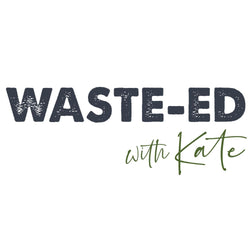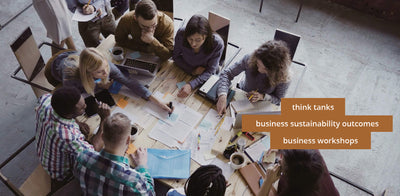10 Easy Ways to reduce waste with a New Baby In the house
When a new baby arrives in the house, so many things change. Your routine turns into what routine? Your total outlook on life changes because you have a little person to love and protect. And your waste increases by about 50%because of all of the disposable products we tend to use for babies.
Over the following years, the baby grows and so do the things we waste. Disposable nappies, single use products, food scraps from half eaten foods, plastic and packaging from toys… the list goes on.
One of the things we seem to have lost touch with is, where does all of this unnecessary waste end up? Well, I can tell you. It ends up in a landfill, which is like a time capsule of our obsessive plastic-packaged disposable generation.
I could go on and on about all of the potential ways you can reduce waste with a baby in the house. It takes time. It has taken me 9 years to get to where I am now and we have done one thing at a time. We started with nappies and went from there. Over time we added in one little step at a time and have become a sustainable household. We are not perfect, we are just doing our best.
Some days it feels like using disposable things are easier than using reusable things. I believe that it is our mindset that needs to change.
From my personal experience, I believe that we were convinced by very astute marketing that we would have more time available in our lives if we used disposable products because you could just throw it away when you are done with it instead of taking the time to wash it.
Over time in our home we have found that most reusable things will work just as well if not better than their disposable counterparts, it is just that fact that you can dispose of it instead of cleaning something that makes it seem easier at the time.
But when you look at how much more it costs to buy the disposable options, I believe we ended up working for longer to be able to afford the disposable lifestyle. At the end of the day we realized that we were actually just throwing our money into the landfill.
Now we are more aware of what we buy, what we throw away and our overall waste situation. If I can do it, anyone can do it!
Here are a few options to get you started:
- 1. Baby showers can make waste!
- People love to give the new parents baby gifts. While their generosity is a wonderful thing, it can result in an overwhelming number of clothes, toys, and weird gadgets and gizmos that you really don't need.
Sometimes what can be far more helpful for new parents are more practical gifts. Perhaps you have a mate whois a great cook and could give you a few meals for in the freezer, gift certificates might be helpful that you could put towards your new buggy or carseat. Everyone generally just wants to help and make life easier for the new family so have a think about what you need and put that out there.
- 2. Only buy what you need!
- Don’t get sucked into the lists of stuff you need to buy to have a baby, these are written by the stores and are there to sell you a bunch of things you will never use.
You don’t need to buy things just in case you need it, you can just buy what you need and if you need something else you can go and buy it afterwards. Online shopping makes it so much easier to shop from home.
Don’t worry you are not missing out! Most of the amazing plastic clad products that promise to improve and ease your parenting journey are not necessary. In fact I would almost guarantee you probably won’t ever miss them if you don’t buy them.
- 3. Buy Second Hand
There are so many products we don’t need to purchase new. Things like Cots are used for such a short amount of time, do you really need the expense of a whole new one or could you buy a second hand one and just buy a new mattress for it?
Clothing is another big environmental contributor of emissions, babies grow out of everything so fast that second-hand baby clothing is often like new. What you might pay $30 for new you can often get for $2 atan opshop.
Wherever possible look for second hand, save money and the planet at the same time!!!
- 4. Try Cloth Nappies
Let's just say...Cloth nappies make sense and cents!
When my son was first born, he was getting changed around 8 – 10 times per day. Over a week that is 80 nappies…wow, before you know it you have a whole rubbish bin of poop filled nappies every week - plus imagine the drain on our wallets...
Originally we tried the old flat nappies when we first got home from hospital and after a bit of awkward origami, we both gave up. Had I known there were some awesomely easy newborn folds along with the modern version of a pin called a snappi or a nappi nippa, the flat nappies could more than likely have been one of our favorites.
It wasn’t until my friend Paula, who was originally from Australia showed me some very cute, easy to use cloth nappies that had Velcro, no pins and you didn’t need to soak them, that I decided to have a go with modern cloth nappies.
We brought 4 different nappies (different brand and different styles) and gave it a go. It was amazing! We had always found that because Daniel has little chicken legs that the disposables leaked all of the time. As soon as we changed to the “New’ Cloth nappies, we had less leakage and the nappies that we chose were better at containing even the biggest, nastiest poonami!
This meant that we were actually doing less washing because we were just washing a cloth nappy not a full set of clothes and bedding, which was often the case when he had what we called one of his poonami’s in a disposable.
So the cloth nappies not only contained ‘everything’ better, they were much easier to use than what we expected. We also loved that you could get all sorts of colours and patterns.
For most of the time Daniel was in nappies, I used cloth nappies about 80% of the time and disposables 20% of the time like when we were out and about or on holiday.We viewed the disposable nappiesas a convenience item not a day to day product. When you think about it,they are too expensive for daily use and our parents never used them every day,they were a luxury item that they used just when they were out and about or on holiday.
My Blog is full of articles about cloth nappies so if you want more information head to the Blog for more information.

- 5. AVOID "Flushable" products:
Flushable liners & wipes, sanitary products, kitchen paper towels and anything that is not toilet paper ……Are NOT flushable! They along with the so called flushable liners are creating havoc for many councils all over the world as they get caught in the sewers, attract fat and then turn into fatbergs. Checkout the fatberg epidemic ...https://www.theguardian.com/uk-news/2015/apr/21/huge-10-ton-fatberg-removed-chelsea-sewer-london
Flushable liners should be treated the same was as disposable wipes and be rinsed and thrown into your landfill bin.
- 6. Use reusable wipes
- Reusable cloth wipes are a great alternative to buying disposable wipes!
Washable wipes are all I ever used. I purchased 24 terry wipes when myson was born and only ever used them with water, saving myself hundreds of dollars. Water works wonders on bottoms! I never used a solution with them and generally used 1-2 wipes per change. When I have had to use disposable wipes while out, I found I was using at least 10 to 20 wipes per change because they are so small and flimsy.
Washable wipes can also be made by cutting up a towel or buying some fabric tomake your own. Mine are around the same size as a face cloth. - 7. Buy Eco Friendly Toys
- Avoid plastic toys wherever possible, There are many plastic toys on the market that break almost instantly, and then they have nowhere to go but the bin.. Look for things like wooden teethers, wooden toys or even the natural rubber options. Most of the more natural toys are a safer alternative,so your baby isn’t potentially ingesting harmful chemicals from cheap imported plastics.
Babies and young children really don’t need that many toys, so prioritize quality over quantity if possible.
- 8. Avoid pouches - Make your own baby food!
This is actually a very new wastestream that councils have to deal with. When you think about it, if you were feeding your baby full time with food pouches, you may go through 3 pouches per day. That is 1095 pouches per year for one baby.
Where as if you brought your food in bulk or even better, made it yourself and stored it in reusable containers in the freezer, you would save a huge amount of money and reduce a massive amount of un-necessary packaging waste from ending up in a landfill.
There are lots of reusable baby food packaging options. Plastic containers like Sistema or Tupperware will be used hundreds of times. Or you may be interested in some of the newer options like reusable food pouches that can be used 40 -50 times instead of only once.
If you have never done it before, making baby food is actually really easy. When they are little obviously it is very runny food like a boiled up pumpkin or apple which are both super easy to make.
When they are older you can literally make your own meal, like spaghetti bolognaise and pop a portion of it in the food processor and wiz it up and you have a home made baby meal. There are loads of really great recipes online.Here are a couple of places you can get the reusable pouches and some sites have some easy recipes available too:
Munch Cupboard - https://www.munchcupboard.com/
Kai Carriers - https://kaicarrier.co.nz/
- 9. Reusable swim nappies
If you are going to take your baby to swimming lessons, optfor reusable swim nappies instead of disposables. A reusable swim nappy can be used hundreds of times and will again save you a fortune.
There are lots of Cloth Nappy Companies in New Zealand that also sell reusable swim nappies.
- 10. Reusable Breast Pads
- I started out with disposable breast pads but found after a couple of weeks ofuse they were really irritating my skin. So I started looking for reusable alternatives.
Unfortunately there were not as many options back then as there are now but one place I found an abundance of information was Breastmates an online breast feeding shop. They had lotsof different re-usable breast pad options and I found some nice soft ones that had a waterproof backing on them that were comfortable and worked really well. Today there are lots of different options when it comes to reusable breast pads.
You can get
> Bamboo > Wool
> Cotton
> Hemp
> or Fabric Blends
I found once I switched to reusable breast pads we saved a significant amount of money too. It was costing me around $20 per week for disposable breast pads where as I spent $30 with Breastmates and had three sets of reusable ones that lasted as long as I was breastfeeding.
So we worked out that we saved around $390 from when I started using reusable pads. Also because I was reusing the pads it meant that I hadn’t thrown away 1222 breast pads either which is a significant amount of waste.
What can you do.......Just go for it! Even if you only use one cloth nappy per day, you will make a difference every day!
Want to Learn More?
If you are keen to learn even more, come to one of the various workshops that I run all over NZ. You will also walk away with a bag of goodies to get you started from your local council.
It is time to open our eyes and stop living in a bubble pretending everything will be ok. We only have one planet and we need to look after it, otherwise, where will our future generations live?



